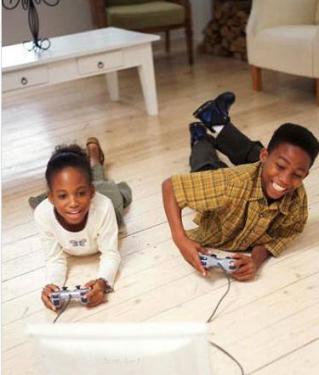 When babies start exploring the world beyond their cradle, the floor becomes their playground. No matter how comfortable the furniture is, they naturally prefer to sit, crawl, or lie on the ground. However, this proximity to the floor also means increased exposure to harmful substances like formaldehyde, which often lingers in flooring materials.
Studies show that over 80% of indoor formaldehyde is concentrated within 1.5 meters of the ground. Since children breathe more air per kilogram of body weight than adults—by about 50%—they are more vulnerable to these toxins. Formaldehyde has been linked to serious health issues, including childhood leukemia. In response, the China Indoor Decoration Association has issued warnings about the risks of improper home renovation, emphasizing the importance of selecting safe, low-emission flooring materials.
When choosing flooring for a child’s space, it's essential to consider both safety and comfort. Common options like wood flooring, engineered wood panels, and stone tiles all come with potential environmental concerns. For instance, man-made panels are known to release higher levels of formaldehyde, while natural stone may contain radioactive elements. Solid wood floors, although generally safer, can still emit volatile organic compounds (VOCs) from paints and finishes.
Some parents opt for tile to avoid chemical emissions, but in colder climates, hard flooring can be uncomfortable and even risky for elderly family members and young children. Therefore, it’s crucial to choose flooring that meets national safety standards and avoids excessive use of materials that could lead to cumulative pollution.
In addition to material selection, there are several important details to consider when designing a child’s room:
1. The floor should feel warm underfoot and be easy to clean. Avoid patterns or seams that could trap dirt or become tripping hazards for toddlers. Small crevices and uneven surfaces can pose hidden dangers.
2. While hard floors are easy to maintain, they can be too rigid for active children who crawl, walk, and play everywhere. A softer, more flexible surface with good anti-slip properties is ideal for safety and comfort.
3. Avoid plastic flooring or foam-based products like puzzle tiles, as they can emit harmful volatile organic compounds that negatively impact a child’s health.
By making informed choices and paying attention to detail, parents can create a safer, healthier environment for their children right from the ground up.
When babies start exploring the world beyond their cradle, the floor becomes their playground. No matter how comfortable the furniture is, they naturally prefer to sit, crawl, or lie on the ground. However, this proximity to the floor also means increased exposure to harmful substances like formaldehyde, which often lingers in flooring materials.
Studies show that over 80% of indoor formaldehyde is concentrated within 1.5 meters of the ground. Since children breathe more air per kilogram of body weight than adults—by about 50%—they are more vulnerable to these toxins. Formaldehyde has been linked to serious health issues, including childhood leukemia. In response, the China Indoor Decoration Association has issued warnings about the risks of improper home renovation, emphasizing the importance of selecting safe, low-emission flooring materials.
When choosing flooring for a child’s space, it's essential to consider both safety and comfort. Common options like wood flooring, engineered wood panels, and stone tiles all come with potential environmental concerns. For instance, man-made panels are known to release higher levels of formaldehyde, while natural stone may contain radioactive elements. Solid wood floors, although generally safer, can still emit volatile organic compounds (VOCs) from paints and finishes.
Some parents opt for tile to avoid chemical emissions, but in colder climates, hard flooring can be uncomfortable and even risky for elderly family members and young children. Therefore, it’s crucial to choose flooring that meets national safety standards and avoids excessive use of materials that could lead to cumulative pollution.
In addition to material selection, there are several important details to consider when designing a child’s room:
1. The floor should feel warm underfoot and be easy to clean. Avoid patterns or seams that could trap dirt or become tripping hazards for toddlers. Small crevices and uneven surfaces can pose hidden dangers.
2. While hard floors are easy to maintain, they can be too rigid for active children who crawl, walk, and play everywhere. A softer, more flexible surface with good anti-slip properties is ideal for safety and comfort.
3. Avoid plastic flooring or foam-based products like puzzle tiles, as they can emit harmful volatile organic compounds that negatively impact a child’s health.
By making informed choices and paying attention to detail, parents can create a safer, healthier environment for their children right from the ground up.Frosted Glass,Custom Frosted Glass,Translucent Glass Windows,Window Frosting
Huaian Hongrui Glass Co.,Ltd , https://www.hongruiglass.com